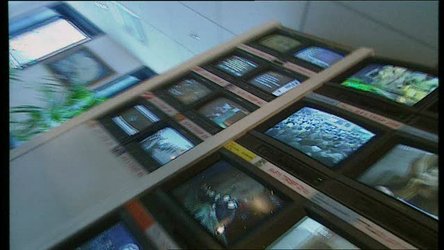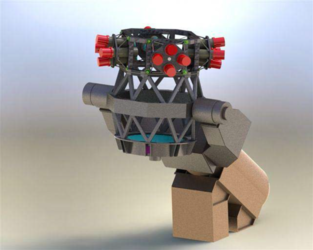Accept all cookies Accept only essential cookies See our Cookie Notice

About ESA
The European Space Agency (ESA) is Europe’s gateway to space. Its mission is to shape the development of Europe’s space capability and ensure that investment in space continues to deliver benefits to the citizens of Europe and the world.
Highlights
ESA - United space in Europe
This is ESA ESA facts Member States & Cooperating States Funding Director General Top management For Member State Delegations European vision European Space Policy ESA & EU Space Councils Responsibility & Sustainability Annual Report Calendar of meetings Corporate newsEstablishments & sites
ESA Headquarters ESA ESTEC ESA ESOC ESA ESRIN ESA EAC ESA ESAC Europe's Spaceport ESA ESEC ESA ECSAT Brussels Office Washington OfficeWorking with ESA
Business with ESA ESA Commercialisation Gateway Law at ESA Careers Cyber resilience at ESA IT at ESA Newsroom Partnerships Merchandising Licence Education Open Space Innovation Platform Integrity and Reporting Administrative Tribunal Health and SafetyMore about ESA
History ESA Historical Archives Exhibitions Publications Art & Culture ESA Merchandise Kids Diversity ESA Brand Centre ESA ChampionsLatest
Space in Member States
Find out more about space activities in our 23 Member States, and understand how ESA works together with their national agencies, institutions and organisations.
Science & Exploration
Exploring our Solar System and unlocking the secrets of the Universe
Go to topicAstronauts
Missions
Juice Euclid Webb Solar Orbiter BepiColombo Gaia ExoMars Cheops Exoplanet missions More missionsActivities
International Space Station Orion service module Gateway Concordia Caves & Pangaea BenefitsLatest
Space Safety
Protecting life and infrastructure on Earth and in orbit
Go to topicAsteroids
Asteroids and Planetary Defence Asteroid danger explained Flyeye telescope: asteroid detection Hera mission: asteroid deflection Near-Earth Object Coordination CentreSpace junk
About space debris Space debris by the numbers Space Environment Report In space refuelling, refurbishing and removingSafety from space
Clean Space ecodesign Zero Debris Technologies Space for Earth Supporting Sustainable DevelopmentLatest
Applications
Using space to benefit citizens and meet future challenges on Earth
Go to topicObserving the Earth
Observing the Earth Future EO Copernicus Meteorology Space for our climate Satellite missionsCommercialisation
ESA Commercialisation Gateway Open Space Innovation Platform Business Incubation ESA Space SolutionsLatest
Enabling & Support
Making space accessible and developing the technologies for the future
Go to topicBuilding missions
Space Engineering and Technology Test centre Laboratories Concurrent Design Facility Preparing for the future Shaping the Future Discovery and Preparation Advanced Concepts TeamSpace transportation
Space Transportation Ariane Vega Space Rider Future space transportation Boost! Europe's Spaceport Launches from Europe's Spaceport from 2012Latest

Microwave lenses harnessed for multi-beam forming
Thank you for liking
You have already liked this page, you can only like it once!
This highly compact beam forming network has been designed for multi-beam satellite payload antennas. Generating a total of 64 signal beams outputted from a single antenna, this novel design could cover the entire Earth with multiple spot beams from geostationary orbit.
“The traditional solution for a multibeam telecommunications satellite payload would be a single feed per signal beam, but only a limited number of feeds are able to be accommodated in front of the satellite antenna, with each feed requiring a dedicated amplifier,” explains Petar Jankovic of ESA’s Radio Frequency Equipment and Technology section.
“This is a highly integrated, lower mass alternative, developed with Airbus in Italy.”
What looks like a sunburst design is actually a ‘Rotman’ lens, laid down on a printed circuit board, used to direct and focus microwaves. These are commonly employed in terrestrial radar systems, for instance aboard high-end drones or in-car radar, and are also being looked at for future 5G base stations.
A single flat Rotman lens allows beam scanning along a single axis. For this design, eight of these Rotman lenses are stacked horizontally, and eight more are arranged vertically. The result is a two-dimensional array of 64 pencil-shaped signal beams – and this architecture can be leveraged up as desired.
“Testing of our prototype demonstrator shows high performance, demonstrating low insertion loss and with the measured worst-case return loss for the beam ports and array ports always better than 15 decibels throughout the full Ka- operative band,” adds Petar. “For all our measured beams very regular pointing has been achieved.”
Almost perfect alignment between simulation and measurement results have been achieved, guided by ESA in-house software that converts mathematical models of the lenses into geometric structures, combined with commercial software used to simulate the prototype in advance of its manufacture and testing.
Developed through ESA’s long-running Advanced Research in Telecommunications Systems (ARTES) programme, this beam forming network demonstrator was designed and built using space-qualified solutions, materials and processes. The next step would be to manufacture a qualification model to qualify the design at equipment level for flight.
-
CREDIT
ESA-P. Jankovic -
LICENCE
ESA Standard Licence

Using laser beam for communicating with distant spacecraft

Skyplex

Working in BEAM

Flyeye telescope















 Germany
Germany
 Austria
Austria
 Belgium
Belgium
 Denmark
Denmark
 Spain
Spain
 Estonia
Estonia
 Finland
Finland
 France
France
 Greece
Greece
 Hungary
Hungary
 Ireland
Ireland
 Italy
Italy
 Luxembourg
Luxembourg
 Norway
Norway
 The Netherlands
The Netherlands
 Poland
Poland
 Portugal
Portugal
 Czechia
Czechia
 Romania
Romania
 United Kingdom
United Kingdom
 Slovenia
Slovenia
 Sweden
Sweden
 Switzerland
Switzerland


























